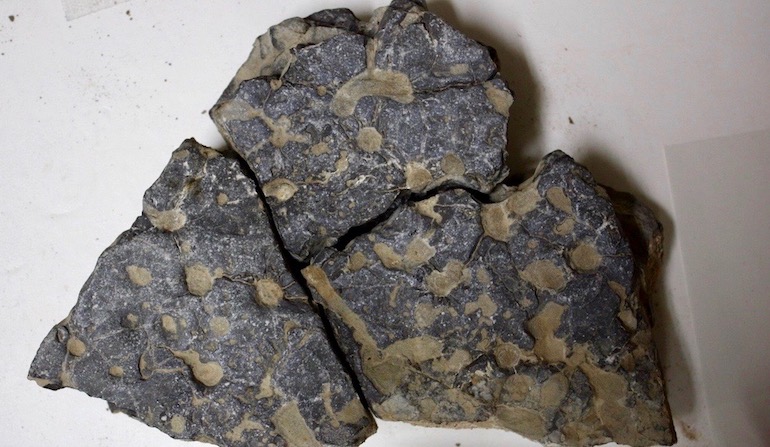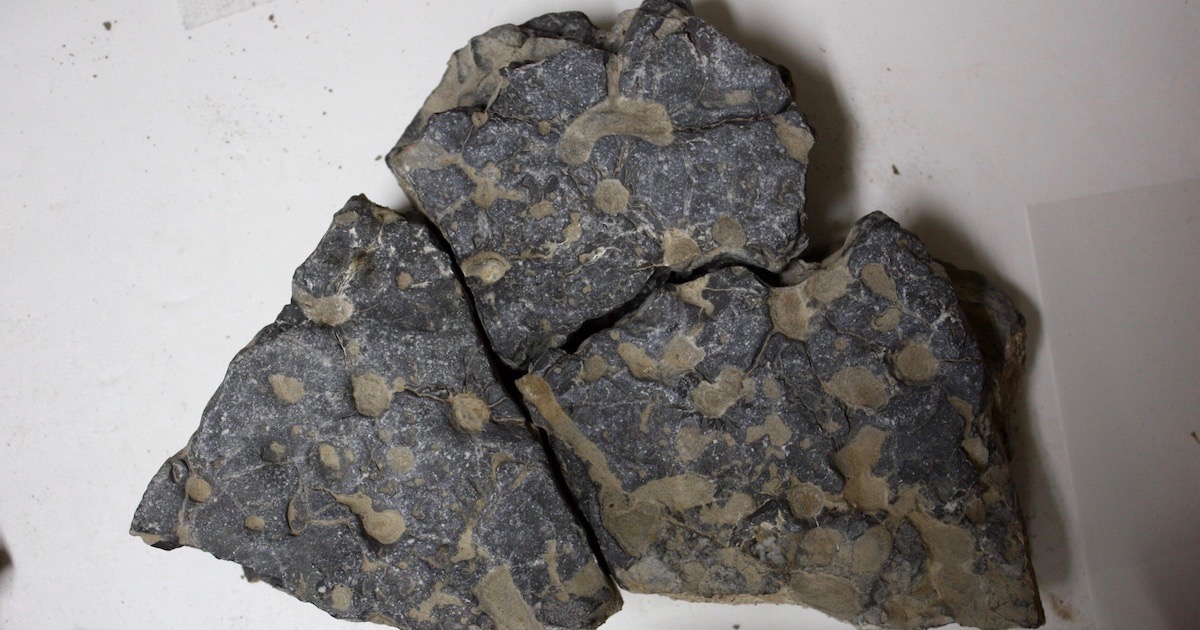 Evolution
Evolution
 Intelligent Design
Intelligent Design
Cambrian Explosion Shrapnel Still Hitting Evolutionary Scenarios


How many evolutionary explanations for the Cambrian explosion have come and gone so far? We’ve seen the oxygen theory, the cancer theory, the slime theory, and others. Here’s another contender reported by Quanta Magazine: the tipping-point theory. Animals were trying really hard to hit on regulatory gene networks by chance. It took a really long time, but — finally! — they hit the lottery, and it all took off.
This model is the brainchild of Nicholas Butterfield of the University of Cambridge. He published it in Geobiology. It’s open access, so you can take a look. Back at Quanta, staff writer Jordana Cepelewicz says that the new theory not only explains the suddenness of the Cambrian explosion, but why it took so long.
Approximately 540 million years ago, life rapidly diversified in an evolutionary burst — a biological “Big Bang” that witnessed the emergence of nearly every modern animal group. Scientists have long sought to determine what caused the Cambrian explosion, and to explain why animal life didn’t take this step at any point about a billion years earlier. [Emphasis added.]
Butterfield doesn’t buy the oxygen theory. He points to other situations where animals make do without modern levels of oxygen. Surely microbes could have figured out how to get the needed energy. Besides, there should have been enough oxygen in the oceans to support life long before the so-called Great Oxidation Event 2.4 billion years ago — and that was long before the Cambrian explosion (540 million years ago).
Before animals could explode onto the scene, he thinks, they needed two things: the ability to re-engineer oxygen structure in the oceans (what he calls “aquatic bioturbation”) and the invention of gene regulatory networks to adapt to the new environment.
Eventually, this cascading interplay between animals’ inadvertent re-engineering of ocean structure and their adaptive responses to those changes reached a tipping point. “The system went critical,” in Butterfield’s words, resulting in the sudden eruption of animal diversity and complexity during the Cambrian.
The delayed appearance of animals in the ocean was therefore not caused by a lack of oxygen, according to Butterfield, but rather because blind Darwinian evolution needed time to arrive at that tipping point. “The gene regulatory network to build an animal is the most complex algorithm that evolution has ever produced,” he said. “And it’s only ever happened once, [just as] it’s only ever happened once in land plants,” which he points out are the only other lineage of organisms to have derived differentiated tissues, organs and organ systems. “And that took even longer. It followed the evolution of animals by another 100 million years.”
Notice first of all that Butterfield turns the oxygen theory on its head. A rise in oxygen was a result, not a cause, of the explosion. Secondly, observe that his argument is basically a blind watchmaker argument: “blind Darwinian evolution” was trying very hard to arrive at the magic combination to unlock the inherent potential of animals to evolve. It took a long time, but once it happened, the rest was easy. Selective pressures would guarantee the emergence of muscles, eyes, digestive systems, armor, and all the rest.
All biological exchange ultimately depends on chemical diffusion, but it is the associated fluid‐dynamic context that determines physiological and ecological properties (Agutter, Malone, & Wheatley, 2000). In the context of early animal evolution, it was the evolutionary assembly of increasingly sophisticated devices for manipulating fluids that revolutionized the biosphere. Collectivized flagellar beating was clearly the place to start, providing the stepping stone to higher‐order divisions of labour … In its wake came efficiencies of scale, the evolutionary discovery of muscular propulsion and stepwise application of emergent hydrodynamic properties.
It all began with the first microbes inventing ways to utilize the available oxygen. They did this by creating currents around their bodies, increasing diffusion of dissolved oxygen so they could use it for energy. The more those microbes perfected this novelty, the more they restructured the ocean depths with aquatic bioturbation, sending more oxygen downward for more microbes to use. Once the gene regulatory networks were discovered by chance, the fuse was lit. Evolution was set to discover muscles and all kinds of other neat inventions.
Instant Flagella
Butterfield starts with flagella already working. Isn’t that a bit like assuming a can opener? Actually, yes, and he isn’t the only one. In Current Biology, Khan and Scholey take a look at the three different cases of rotary outboard motors in the three kingdoms life: the flagellum in bacteria (prokaryotes), the archaellum in archaea, and the cilium in eukaryotes. Guess which one they think emerged first. That’s right: according to Figure 1, the bacterial flagellum — the icon of intelligent design and irreducible complexity — emerged first. (If you’re going to believe in miracles of chance, might as well start big.) The other two, being structurally different, could not have evolved from it, because they “assemble from distinct subunits that do not share a common ancestor and generate torque using energy derived from distinct fuel sources…” In comes one of Darwinism’s favorite magic phrases to explain this situation:
Cells from all three domains of life on Earth utilize motile macromolecular devices that protrude from the cell surface to generate forces that allow them to swim through fluid media. Research carried out on archaea during the past decade or so has led to the recognition that, despite their common function, the motility devices of the three domains display fundamental differences in their properties and ancestry, reflecting a striking example of convergent evolution.
Other Cambrian News
Remember the Cambrian fossil bed in northern Greenland we recently talked about? Researchers found exquisite preservation of “not just one, but 15 fossilized brains from a 520-million-year-old marine predator,” reports Live Science. The discovery “is helping scientists understand how ancient brains evolved into the complex command centers they are today.” National Geographic breathes life into these complex National Geographic:
The extinct species, Kerygmachela kierkegaardi, swam in ocean waters during an evolutionary arms race called the Cambrian explosion. Flanked by 11 wrinkly flaps on each side of its body, the ancient predator sported a long tail spine and a rounded head. Its fearsome forward-facing appendages grasped prey, says UK-based paleontologist Jakob Vinther, “making lives miserable for other animals.”
Scientific names can be fun to analyze. This one, named by Graham Budd in 1993, honors philosopher Søren Kierkegaard for some reason. The genus name is even more peculiar for an evolutionary context. Kerygma is Greek for “the preaching of the gospel of Christ, especially in the manner of the early church,” and chela is Greek for pincer or claw. We leave it to the reader’s imagination how this creature got its name. Whatever you call it, it was a complex animal with image-forming eyes, looking somewhat like an anomalocarid. The main point was that its brain was so well preserved, the discoverers could make out details of its structure.
Did animal burrowing begin before the Cambrian explosion? News from Nagoya University reports U-shaped tunnels under some Ediacaran environments found in Mongolia show “early origins of animal behavior.” No animals were found. The rest is optimistic speculation:
“It is impossible to identify the kind of animal that produced the Arenicolites traces,” lead author Tatsuo Oji says. “However, they were certainly bilaterian animals based on the complexity of the traces, and were probably worm-like in nature. These fossils are the earliest evidence for animals making semi-permanent domiciles in sediment. The evolution of macrophagous predation was probably the selective pressure for these trace makers to build such semi-permanent infaunal structures, as they would have provided safety from many predators.”
One would like to see actual worms before accepting the premise of this series of cumulative speculations. The centimeter-diameter traces, reported in the Royal Society Open Science journal, could have other explanations, given that they are not found anywhere else. It sounds like a case of exaggerated special pleading to call this the beginning of an “agronomic revolution” that “did not proceed in a uniform pattern across all depositional environments during the Cambrian radiation, but rather in a patchwork of varying bioturbation levels across marine seafloors that lasted well into the early Paleozoic.”
Another discovery should put the brakes on speculations that Cloudina was evolving into a Cambrian animal (see these March and July entries at Evolution News from last year). The simple cup-shaped Ediacaran was not a reef builder, according to PNAS. The title by Mehla and Maloof says it all: “Multiscale approach reveals that Cloudina aggregates are detritus and not in situ reef constructions.”
It has been suggested that some Ediacaran microbial reefs were dominated (and possibly built) by an abundant and globally distributed tubular organism known as Cloudina. If true, this interpretation implies that metazoan framework reef building — a complex behavior that is responsible for some of the largest bioconstructions and most diverse environments in modern oceans — emerged much earlier than previously thought. Here, we present 3D reconstructions of Cloudina populations, produced using an automated serial grinding and imaging system coupled with a recently developed neural network image classifier. Our reconstructions show that Cloudina aggregates are composed of transported remains while detailed field observations demonstrate that the studied reef outcrops contain only detrital Cloudina buildups, suggesting that Cloudina played a minor role in Ediacaran reef systems.
As a simple isolated organism that would get swept into heaps of debris, it was not complex enough to qualify as a transitional form to the Cambrian animals.
That’s it for this episode of the Cambrian Explosion Gong Show.
Photo: Evidence of animal burrowing before the Cambrian explosion? Via Nagoya University.
